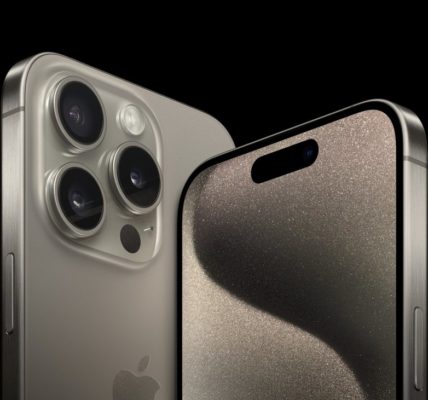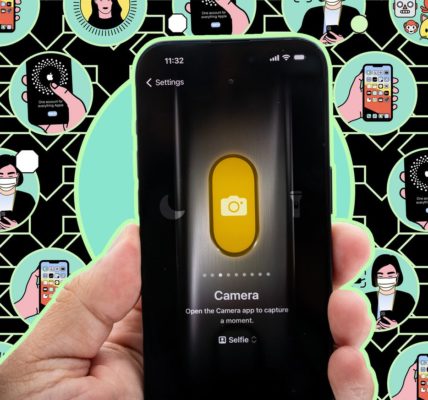The iPhone 15 and iPhone 15 Plus are Apple’s latest standard iPhone models, sporting some bigger upgrades than seen in recent years, but how different really are the two successive iPhone generations?
In 2022, Apple unveiled the iPhone 14 as the successor to the popular iPhone 13, offering 2GB more memory, longer battery life, the Photonic Engine, Action mode, Emergency SOS via satellite, Crash Detection, and more. As devices that are more affordable than the “Pro” models, but more full-featured than the low-cost iPhone SE, the iPhone 15 and iPhone 15 Plus will likely be the most popular option for many customers, starting at a price of $799 for the 128GB model. The iPhone 14 and iPhone 14 Plus continue to be available from Apple for $699 and $799, respectively.
As the iPhone 14 and iPhone 15 share the overwhelming majority of their features, should you consider buying or sticking with the iPhone 14 to save money? Our guide helps to answer the question of how to decide which of these two iPhone models is best for you, and serves as a way to clearly see the differences that the iPhone 15 brings to the table. This article focuses on the iPhone 14 and iPhone 15, Apple’s standard iPhone models, but to understand the differences between the iPhone 14 Pro and iPhone 15 Pro, see our other buyer’s guide:
iPhone 14 Pro vs. iPhone 15 Pro Buyer’s Guide: 30+ Upgrades Compared
The iPhone 14 and iPhone 15 both feature the same display sizes, battery life, 12-megapixel ultra wide camera, and more. Nevertheless, the iPhone 15 still offers a number of substantial upgrades, such as the Dynamic Island, USB-C port, and 48-megapixel camera.
iPhone 14
iPhone 15
Aluminum chassis with squared-off edges
Aluminum chassis with contoured edges
Glossy glass back
Color-infused frosted glass back
“Notch” TrueDepth camera array
Dynamic Island
800 nits max brightness (typical)
1,000 nits max brightness (typical)
1,200 nits peak brightness (HDR)
1,600 nits peak brightness (HDR)
2,000 nits peak brightness (outdoor)
A15 Bionic chip
A16 Bionic chip
5-core GPU
5-core GPU with 50% more memory bandwidth
12-megapixel main camera with ƒ/1.5 aperture
48-megapixel main camera with ƒ/1.6 aperture
0.5x and 1x optical zoom options
0.5x, 1x, and 2x optical zoom options
24- and 48-megapixel super-high-resolution photos
Smart HDR 4
Smart HDR 5
Portrait mode with Focus and Depth Control
Next-generation portraits with Focus and Depth Control
Night mode and Night mode portraits
Improved Night mode and Night mode portraits
Improved audio quality on phone calls
First-generation Ultra Wideband chip
Second-generation Ultra Wideband chip (connects from 3x further away)
Precision Finding for Find My friends
Lightning port
USB-C port
Support for Qi wireless charging
Support for Qi2 wireless charging
Yellow, Blue, Purple, (PRODUCT)RED, Starlight, and Midnight color options
Yellow, Blue, Pink, Green, and Black color options
The iPhone 15’s upgrades over the iPhone 14 are fairly substantial, offering a more refined and appealing design with contoured edges, frosted back glass, and the Dynamic Island. Features like the brighter display and USB-C port are meaningful quality-of-life enhancements that all users will be able to take advantage of. The 48-megapixel main camera, 2x optical zoom option, next-generation portraits, Smart HDR 5, and improved Night mode also make for a significant overall camera improvement for average users. Iterative changes like the A16 Bionic and support for Qi2 are also welcome refinements.
Depending on what sort of user you are, it may not be worth upgrading from an iPhone 13 or iPhone 14 model to the iPhone 15 unless you actively want several of the new features, but the iPhone 15 and iPhone 15 Plus seem to be an unusually large upgrade for Apple’s non-Pro iPhones. As a result, a large number of users with one of these older devices may be able to justify upgrading to an iPhone 15 model. Those with an iPhone 11 or older will definitely receive a major upgrade by purchasing an iPhone 15.
For everyday users, it is worth noting that the switch to USB-C on the iPhone 15 will make any Lightning cables and accessories you have redundant, meaning you’ll need to purchase a $29 adapter or use a new cable. If you’re coming from a much older device, you will also likely need to buy a new power adapter. If you are unhappy about this change, then it may be worth sticking with what you have for another year, but it is worth highlighting that the switch to USB-C is beneficial in the long term since it is a standard port used across a wide range of devices.
Since the iPhone 15 is a mostly noteworthy upgrade, it is generally not worth buying an iPhone 14 model instead, unless it can be found for a significantly lower price. The iPhone 14 and iPhone 14 Plus are only a year old and still very good devices, but the iPhone 15 has a range of improvements that are likely to make it age better and be slightly more useful over time, which warrants its higher price.
This article, “iPhone 14 vs. iPhone 15 Buyer’s Guide: 20 Upgrades Compared” first appeared on MacRumors.com
Discuss this article in our forums




